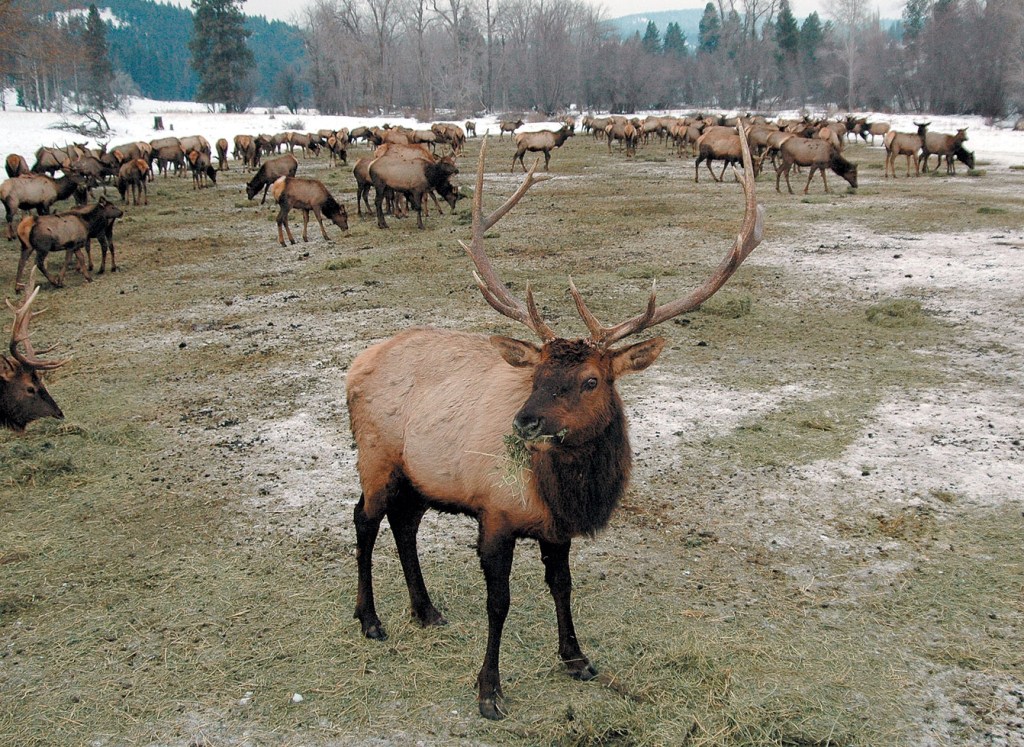Elk feeding continues to ‘the bitter end’
Published 11:45 am Friday, April 7, 2023

- Elk feeding along Anthony Creek west of North Powder during a previous winter.
Dan Marvin has some temporary guests who, even after hanging around for more than four months, aren’t keen to leave.
Moving more than 1,000 elk is rather more ticklish, though, than kicking a lazy visitor off a living room couch soiled with potato chip crumbs.
Marvin manages the Elkhorn Wildlife Area.
That’s the series of 10 stations, along the eastern base of the Elkhorn Mountains, where Marvin and his crew feed elk, and a smaller number of deer, each winter.
The Oregon Department of Fish and Wildlife (ODFW) created the wildlife area in 1971.
Its purpose isn’t to stave off starvation during the region’s long winters, but rather to keep famished elk from plundering cattle ranchers’ haystacks.
In most years, winter
has relinquished its hold,
at least partially, by about
the middle of March, Marvin said.
The elk, which eat with aplomb the alfalfa that the wildlife area workers set out, prefer the tender green grass of spring, he said, and once the snow begins to recede they’ll eschew the handouts in favor of what nature provides.
But this isn’t most years.
With snow and wintry temperatures persisting well past the equinox — the Baker City Airport set a record with a low of 15 degrees on April 5 — Marvin and his co-workers continue to feed hay at mid-winter levels.
“Unlike a lot of years, we’re feeding right to the bitter end,” he said on April 5.
Although the weather hasn’t heeded the calendar, Marvin will.
The wildlife area is closed to the public from Dec. 1, after most of the elk-hunting seasons, until April 10, which is five days before the turkey hunting season starts.
The public closure is designed to prevent people from scaring elk from the feed sites, and thus negating their purpose, Marvin said.
Similarly, there’s no point in trying to feed the animals after the wildlife area reopens, on April 11, because the presence of shed antler hunters, turkey hunters and other visitors would scare off the elk anyway, he said.
“One we open to the public, those elk are not going to stay put,” Marvin said.
Generally there’s no conflict in any case because the elk, usually before April, have moved on anyway.
But this year, with the snow line remaining at or near the valley edge, the elk have stayed on.
Although regular feeding will end April 10, Marvin said workers might put out a few hay bales at some higher elevation sites, where the snow is deeper, to try to avoid having elk start chomping on ranchers’ haystacks.
He is concerned about that possibility, although the problem likely would be short-lived in any case, since spring, improbable as it has seemed recently, is bound to arrive.
Keeping the elk stomachs full will leave the wildlife area with empty barns, Marvin said.
He expects the crew will distribute the entire 1,100-ton supply that he laid in last fall.
Marvin, who has been the wildlife area’s manager since 2018, said this is the first time, in his five winters, when the crew fed elk up to April 10.
But he knows it’s not quite unprecedented.
Ken Emerson, who was the first full-time resident manager, starting in 1981 and continuing for 18 winters (the wildlife area didn’t have a resident manager for the first decade), said he and his crew fed elk up to the public opening in April several times.
But more often than not, Emerson said, the snow receded enough during March that the elk would leave of their own volition.
After Emerson retired, Eddie Miguez managed the wildlife area for 20 winters. Marvin took the spot after Miguez retired.




